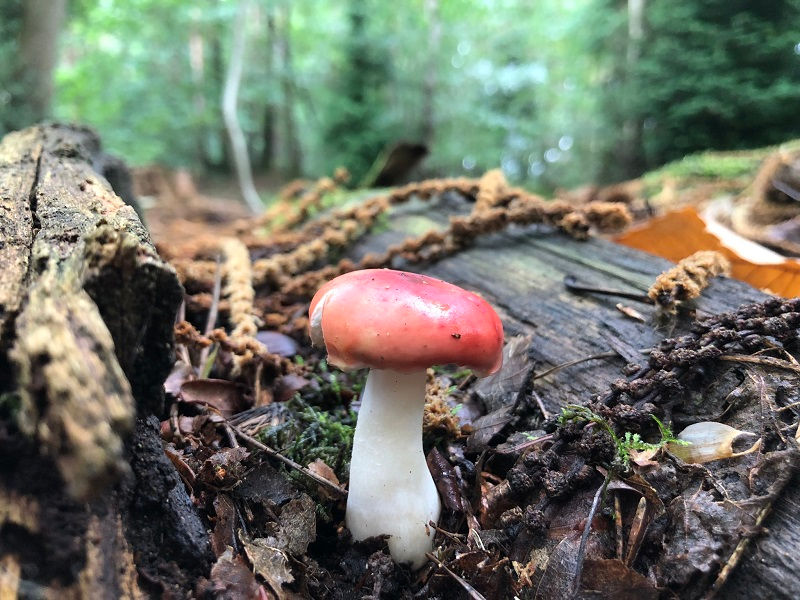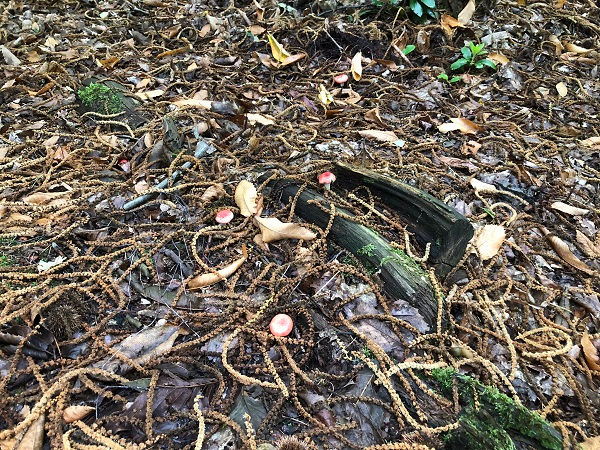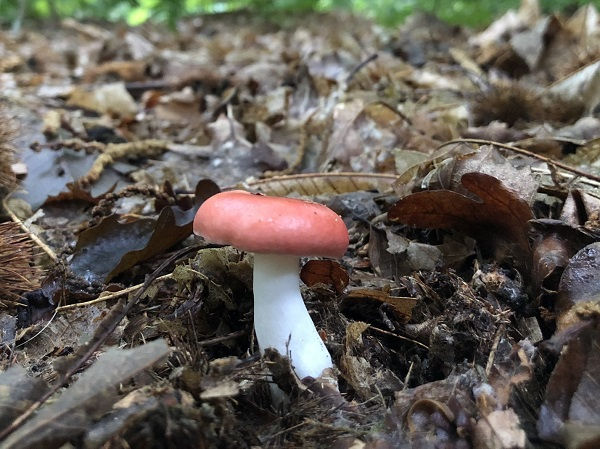Russula silvestris
- The Foraging Course Company
- Jun 4
- 2 min read

Poisonous mushroom - advanced Season - late summer to early winter Common names This mushroom does not have an accepted common name
Scientific name meaning Russula is from the Latin russus, meaning reddish. Silvestris is also Latin and means of or belonging to a wood
Habitat  Russula silvestris is a mycorrhizal fungus found growing in association with sweet chestnut, oak and occasionally pine on sandy soils. |
Overall structure and growth  Russula silvestris is brightly-coloured mushrooms. It can be found as individual fruits but often fruits in large groups. |
Cap  Pinky-red in colour and sometimes paler in the centre, the cap starts off dome shaped and flattens slightly with age. It is 3 to 5cm wide and has faint striations at its margin. The skin will peel 75 to 100% of the distance between the cap edge and centre. |
Gills and spores  The white gills are adnexed (narrowly attached to the stem) to free and brittle. They are fairly crowded. The spore colour is white. |
Stem  The stem is white and sometimes swollen at the base. It snaps like a piece of chalk. It is 4 to 9cm tall and 1 to 2cm wide and has no ring/skirt. |
Flesh, taste and smell  The flesh is white, solid and does not bruise when damaged. The smell is mildly of desiccated coconut and taste is strongly acrid. |
Possible lookalikes  Could be confused with many of the red Russula and possibly fly agaric (Amanita muscaria), pictured, if rain has washed veil remnants away. |
Poisonous parts All parts are poisonous Hazards This mushroom is poisonous and should not be consumed
Use in herbal medicine and medicine Only in recent years has Russula silvestris be separated out as a different species to the sickener (Russula emetica), which has been used to induce vomiting in other poisoning cases
If you are suffering from any ailment or need medical advice, please see your General Practitioner Other uses None known Importance to other species Provides food for invertebrates
Always stay safe when foraging. You need to be 100% sure of your identification, 100% sure that your foraged item is edible, and 100% sure that you are not allergic to it (it is good practice to always try a small amount of any new food you are consuming). If in doubt, leave it out!









Comments